November is high tide season. High tides usually happen in late autumn or during winter, but several of the highest tides ever measured have been in November. The highest measured was at 1.94m on November 4th, 1966, and the second highest at 1.87m on November 12th, 2019.
It is very likely that even higher tides have happened before modern measurements started.

The tide explained
The tides in Venice, and in the upper Adriatic, are rather complex. There are astronomical, geographical and meteorological factors. In the end, the mathematical model for the tide in the upper Adriatic comprises seven different superimposed curves.
The astronomical tide
The basis for any tide is astronomical. The gravity of the moon and the sun attracts the water, which then moves with the movement and rotation of the earth, the moon and the sun. All together this causes some very long, and sometimes huge, waves in the sea.
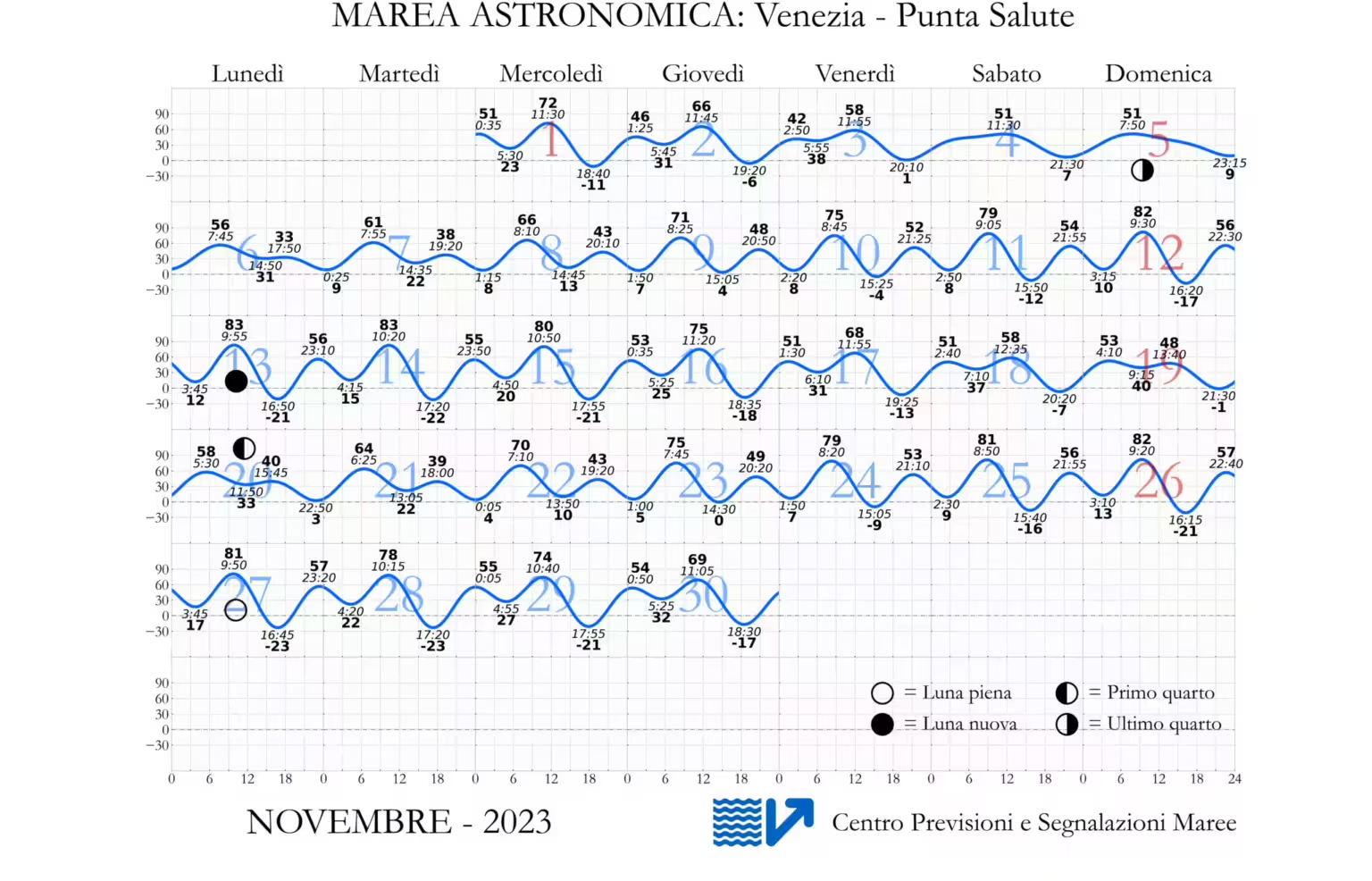
The larger the ocean, the larger the wave, which is why there’s a far larger tide in the Atlantic, Pacific and Indian oceans than in much smaller bodies of water like the Mediterranean.
Generally speaking, the astronomical tide in the Mediterranean is less than half a metre, while the tide in the Atlantic and Pacific can reach levels of 5-10 m.
The astronomical tide is stronger when the sun, earth and moon are in line, which corresponds to a full moon or a new moon. That is a spring tide. The tide is weaker at half moons, whether waning or waxing because then the sun and moon pull in perpendicular directions. This is a neap tide.
There are therefore two cycles to the astronomical tide. One daily with two lows and two highs each day, and one following the lunar month.
The astronomical tide can be calculated precisely years ahead.
Geography
The Adriatic Sea has a substantially larger tide than the rest of the Mediterranean, due to the geography of the basin.

While the main movement of the tide in the Adriatic is along the axis of the basin, the tide also causes perpendicular waves. The Venetians call it la sessa.
There are two waves, with different frequency, bouncing back and forth across the Adriatic. It is similar to trying to carry water in a tray. Once it starts moving back and forth, it is very difficult to stop.
The two waves of the sessa interfere with the main wave of the astronomical tide. The sessa can both weaken and strengthen the normal tide in any given location.
The geographic component of the tide can also be calculated well in advance.
Weather
The most difficult part of forecasting the tide in Venice is the weather, and such a forecast is therefore at most for a few days at a time.
The most obvious part is rain, but it has a surprisingly small effect. Even heavy rain will add very little to the overall tide.
Far more important is the air pressure. If there’s a high pressure area on some part of the Adriatic (including the Venetian lagoon) and a lower pressure somewhere else, the higher pressure pushes the water down, and it consequently rises where the air pressure is lower.
Air pressure alone can add or subtract up to 25cm from the regular tide in the lagoon.

Wind and sea interact. Waves at sea are created by attrition between the air moving over the surface of the water, gradually building up waves from small ripples on the surface to walls of water.
The wind therefore has an impact on the tide. It actually makes a difference if the tidal wave has a head or tailwind out in the Adriatic.
The historically highest tides have almost all coincided with sustained south-eastern winds in the upper Adriatic. That way, when the tide rises, it has a tailwind, and consequently rises a little bit more. Likewise, when the tide recedes, it faces a headwind, and it falls a little bit less.
In this way, for each twelve-hour cycle, a little bit is added to the water level. It can be up to 5 cm, but over several days with two cycles each day, it can soon become 20 cm, 30 cm or even more.
Often these factors conspire, as low pressure, rain and strong winds appear together. As a consequence, in such situations the meteorological factors can be large.
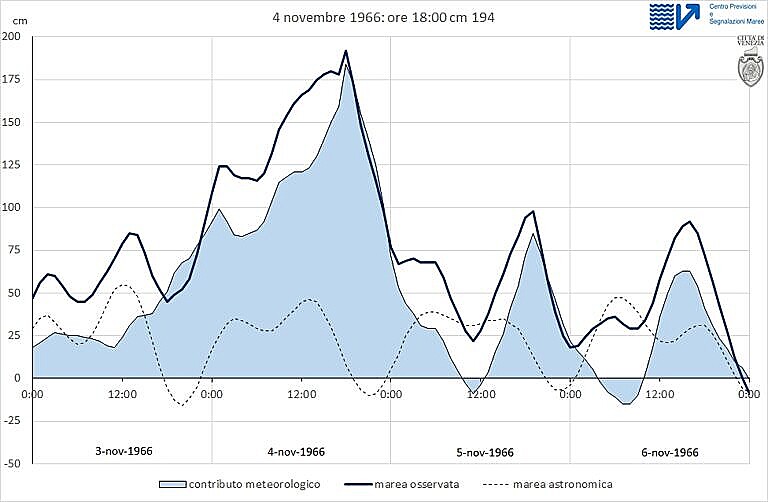
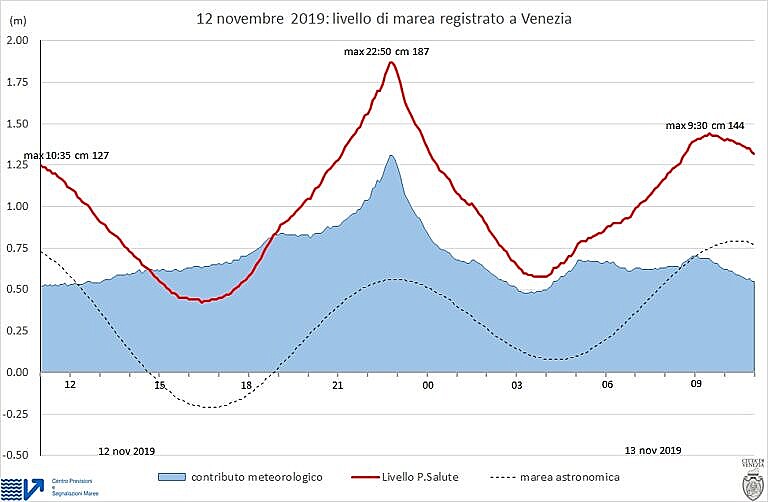
Normal and extreme tides
The tide is there every day, so there’s a normal tide, and there are occasionally extreme tides. Only the latter will ever make the news.
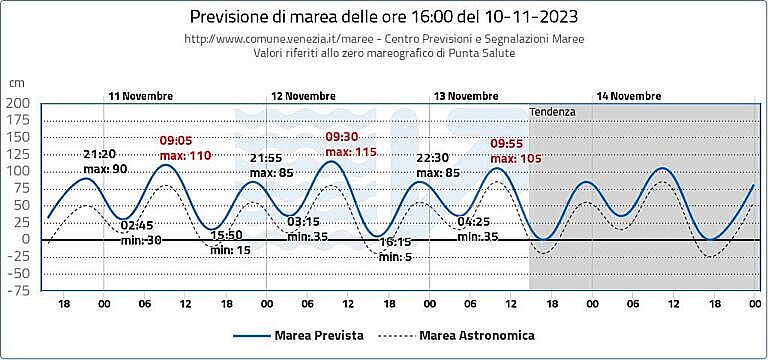
Normal spring tides have lows in the range from -30 cm to -20 cm, and highs in the range from 80 cm to 90 cm.
Such tides will not cause any important flooding of the city, or any interruptions to our daily routines.
The range is not symmetric around the zero line. Systematic measurements of the tide started in the late 1800s, and the zero line is as it was then, but Venice is sinking. Venice today is about 30 cm lower than it was back then, so the current tide fluctuates around the 30 cm level.
Tides lower than the normal -30 cm to -20 cm leave too little water in some canals, so deliveries and public transport can be affected. Some minor city canals can run almost dry if the tide drops a lot. However, in general, extreme low tides are less problematic than extreme high tides.
When the tides go above 90 cm, the problems start. At 110 cm about 12% of the city is under water, at slightly over 130 cm half the city is flooded, and at 150 cm over two thirds. The highest tide measured, at 194 cm on November 4th, 1966, flooded around 90% of the city.
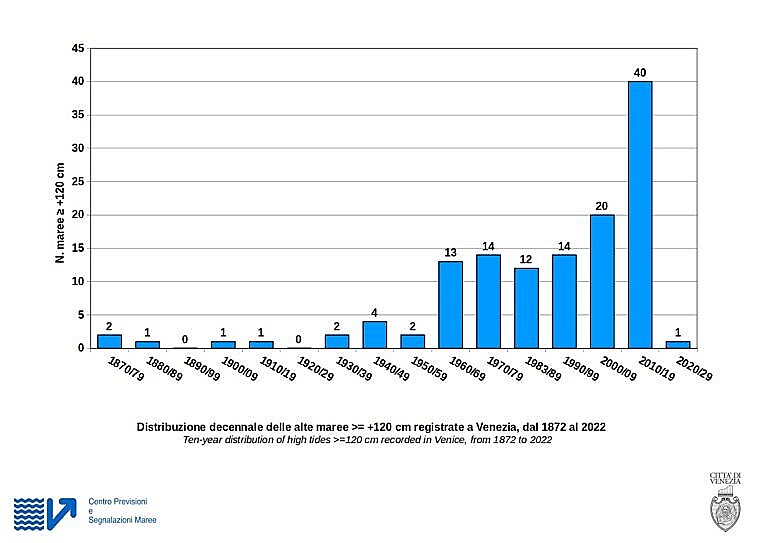
Extreme high tides are now far more common than they were, historically speaking.
Since the 1960s, the number of tides above 120 cm has grown ten-fold.
The reason for this increase is almost certainly the excavation of a very deep canal across the lagoon to the commercial and industrial harbour at Marghera on the mainland.
The Canale dei petroli has practically destroyed the southern lagoon, and by messing the fragile hydrology of the Venetian lagoon it has caused immense damage to the city of Venice too.
Living with the tide
With both daily and monthly tidal cycles, it is inevitably an important part of our daily lives in Venice. It has always been ever present in Venice.

Anybody with a boat, or with a home, shop or workplace in one of the lower bits of the city, will have to care about the tide. Needless to say, we all have boots and waders in our homes, just in case.
The Municipality of Venice has a tide forecast office which produces several forecasts each day. They also prepare downloadable calendar pages with the astronomical tide more than a year ahead. Their web pages, which are partially in English, have plenty of good explanations of the tide, including historial data.
The same tide forecast office sends out alerts by email and text messages when there’s a forecast for high tides over 110 cm.
We have a website where we can see the elevation of almost every stone in the pavement, so we can figure what will flood when.
The graphs used in this article are all from the Centro Previsioni e Segnalazioni Maree.
The MOSE floodgates
We have not had a major flooding in Venice since November 2019.
This is because of the MOSE floodgates.
The MOSE projects came out of the disastrous flooding of 1966, and it as not been easy going. Politically the project met lots of resistance, especially from environmental groups. While the gates do work, they have also had a large impact on the lagoon environment. What the long term effects will be remain to be seen.
The MOSE has cost some six billion euros, but due to corruption and mismanagement the whole projects was put under administration by the Italian national anti-corruption commissioner.
It does, however, work despite all the difficulties and doubts.

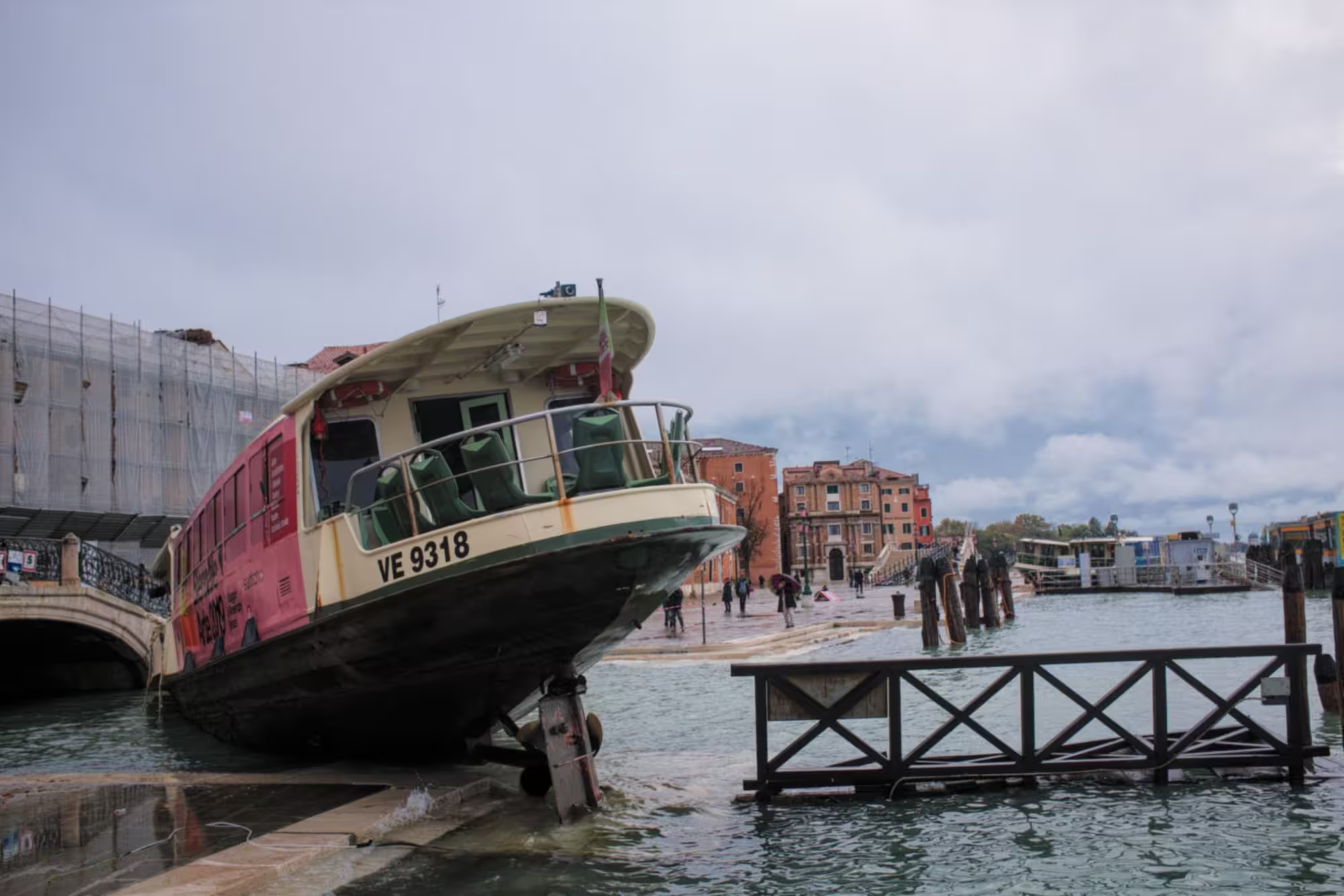


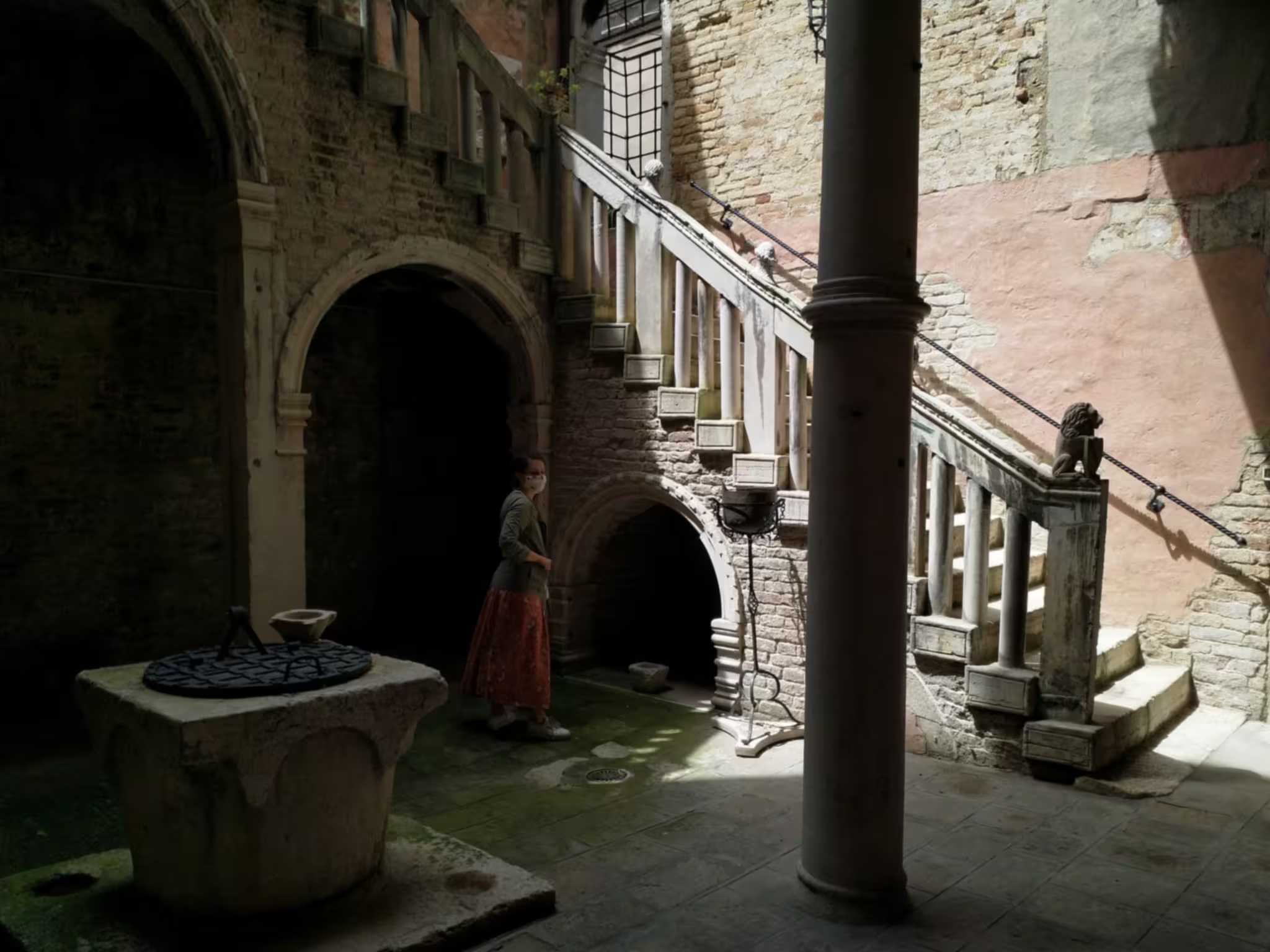
Leave a Reply